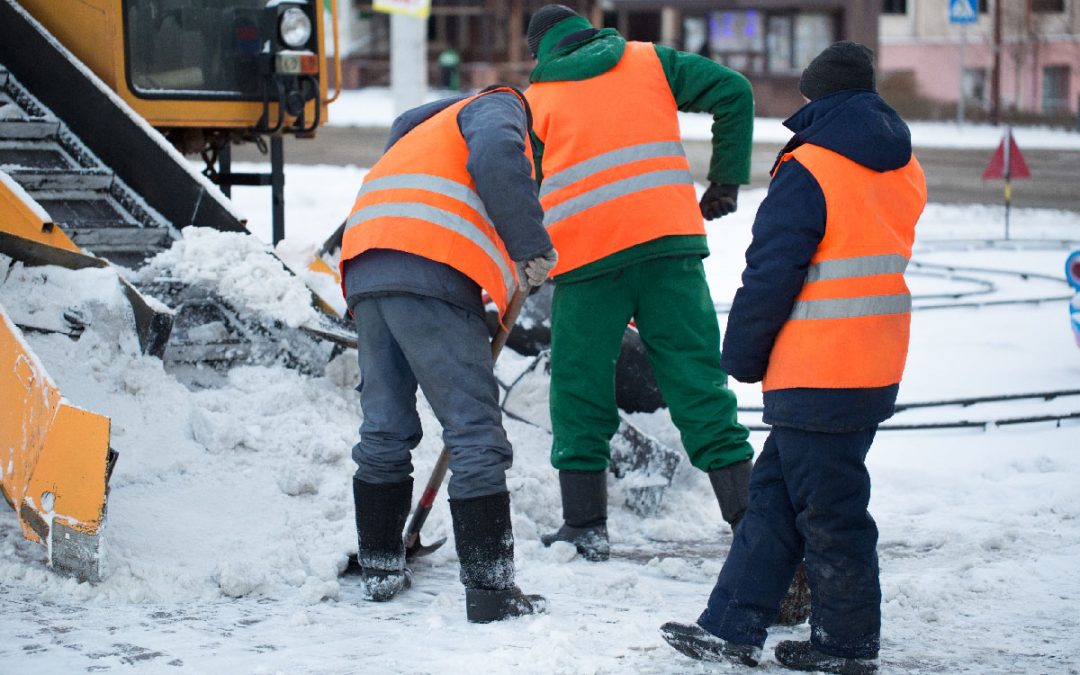In many parts of the country the cold winter weather has arrived, and with it come numerous health and safety hazards that aren’t always visible to the naked eye.
Cold stress, which occurs when the skin and body temperature is driven down to the point where the body is unable to warm itself, can be especially dangerous for those of us who work in frigid temperatures. For employees working in indoor freezers or outdoors, exposure over a long period of time can lead to frostbite, hypothermia, and even death.
With that said, here are some tips for preventing cold-related injury, illness, and stress:
- Be aware of signs and symptoms — Hypothermia signs include cool skin, slowed or irregular breathing, slower heartbeat, weak pulse, uncontrollable shivering, severe shaking, rigid muscles, drowsiness, exhaustion, slurred speech, and memory lapse. Frostbite signs and symptoms include paleness of the skin, a sensation of coldness of pain, pain disappearing with the freezing of tissue, tissues becoming whiter and harder. Trench foot is a serious condition that results from your feet being wet for too long. Symptoms include blisters, redness, skin tissue that dies and falls off, and feelings of cold, heaviness, numbness, tingling.
- Use the buddy system when working in freezing temperatures — Always work with a partner when working in freezing conditions, so you may monitor each other for potential danger signs.
- Plan outdoor cold weather work for the warmest part of the day — Pace yourself; when and where possible, check the weather forecast and plan to work during what should be the warmest portion of the day.
- Employers must provide engineering controls — Radiant heaters to warm workers or work areas to shield workers from wind to reduce wind chill need to be available to employees.
- Avoid staying in the cold for long periods of time — Employers need to gradually introduce workers to the cold; monitor workers; schedule breaks in warm areas and shorten shifts.
- Layer Clothing — Several thick layers of clothing will protect your body better than one or two thicker layers. Choose synthetic fabrics to avoid absorption of sweat. For outer layers of clothing, chose fabrics made of waterproof and wind-resistant material.
- Wear appropriate, cold weather and job-required personal protection gear — Warm gloves, hats, coats, hoods are a must. Make sure all areas of skin are protected. Make sure footwear is insulated, water-resistant and slip-resistant and offers ample room to wear multiple pairs of socks.
- Wear eye protection — Excessive ultraviolet rays, in combination with ice or snow, make eye protection a must. Know what conditions you will be exposed to (glare, blowing snow, etc.) and make sure your eyes are protected with the proper eyewear.
- Stay hydrated —Dehydration is as common in winter months as it is in summer months because cold weather tends to move body fluids from your extremities to your core, increasing your urine output and adding to dehydration. A dehydrated body is more susceptible to common colds and flu.
- Eat and drink hot foods and liquids — Consume warm, sweet beverages. Avoid caffeine and alcohol. It is important to stay hydrated in cold temperatures, just as it is in hot temperatures.

